This Week in Petroleum History: July 15 – 21
July 16, 1907 – Drilling Pioneer patents Casing Shoe –
After drilling wells in Kern River oilfields, R. Carlton “Carl” Baker (1872-1957) of Coalinga, California, patented the Baker well-casing shoe. His cable-tool innovation at the bottom of the casing string increased efficiency and reliability for ensuring oil flowed through a well.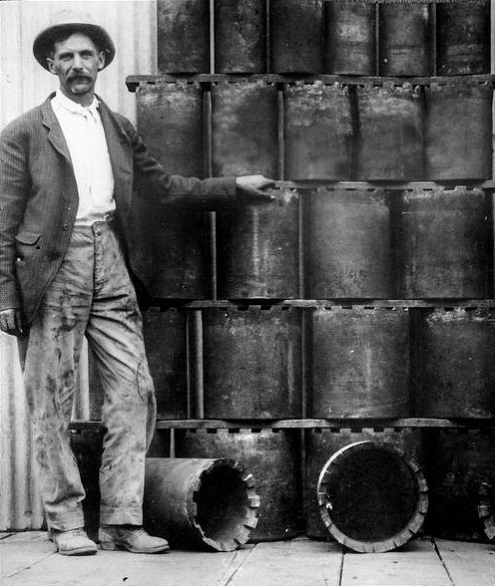
Reuben Carlton “Carl” Baker standing next to Baker Casing Shoes in 1914. Photo courtesy the now closed R.C. Baker Memorial Museum.
July 16, 1926 – Oil Discovery launches Greater Seminole Area Boom
Three years after an oil well was completed near Bowlegs, Oklahoma, a gusher south of Seminole revealed the true oil potential of Seminole County. The Fixico No. 1 well penetrated the prolific Wilcox Sands formation at a depth of 4,073 feet.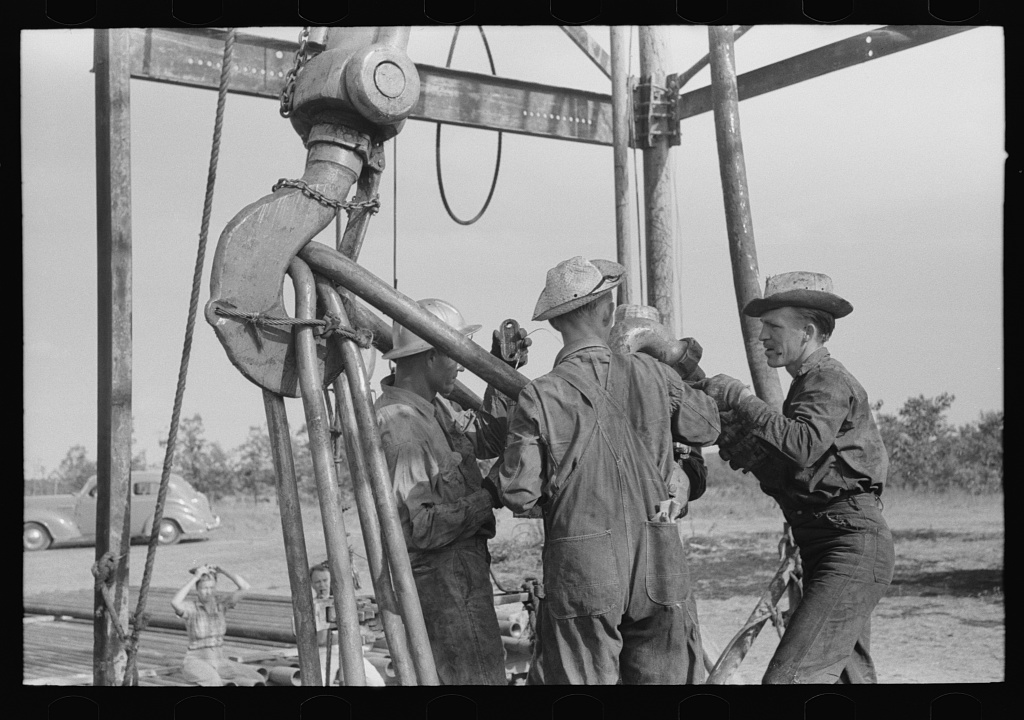
“Oil workers working on lowered traveling block” at well in Seminole oilfield, August 1939. Photo by Russell Lee (1903-1986) courtesy Library of Congress.

July 16, 1935 – Oklahoma Publisher produces First Parking Meter
As the booming Oklahoma City oilfield added to the congestion of cars downtown, the world’s first parking meter was installed at the corner of First Street and Robinson Avenue. Carl C. Magee, publisher of the Oklahoma News, designed the Park-O-Meter No. 1, today preserved by the Oklahoma Historical Society.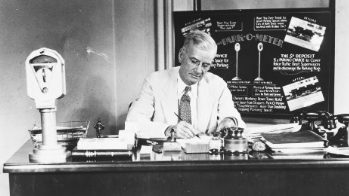
Oklahoma college students helped Carl Magee design the Park-O-Meter No. 1. Photo courtesy Oklahoma Historical Society.
July 16, 1969 – Kerosene fuels launch of Saturn V Moon Rocket
A 19th-century petroleum product made America’s 1969 moon landing possible. Kerosene powered the first-stage rocket engines of the Saturn V when it launched the Apollo 11 mission on July 16. Four days later, astronaut Neil Armstrong announced, “Houston, Tranquility Base here. The Eagle has landed.”
Powered by five first-stage engines fueled by “rocket grade” kerosene, the Saturn V was the tallest, heaviest and most powerful rocket ever built until the SpaceX Starship. Photos courtesy NASA.
July 18, 1929 – Darst Creek Oilfield discovered in West Texas
With initial production of 1,000 barrels of oil a day, the Texas Company No. 1 Dallas Wilson well revealed a new West Texas oilfield at Darst Creek in Guadalupe County, about five miles from the southwestern edge of the Luling oilfield. The field would be developed by Humble Oil and Refining (later Exxon), Gulf Production Company, Magnolia Petroleum (later Mobil), as well as the Texas Company (later Texaco).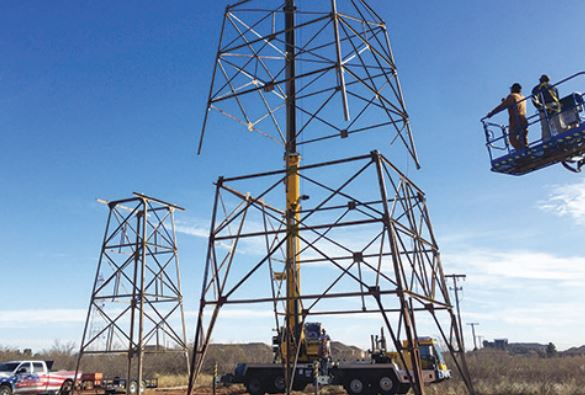
The Petroleum Museum of Midland, Texas, in 2019 erected a circa 1930 derrick used in the Darst Creek oilfield. Photo courtesy the Petroleum Museum.

July 19, 1915 – Petroleum powers Washers and Mowers
Howard Snyder applied to patent his internal combustion-powered washing machine, assigning the rights to the Maytag Company. His washer for “the ordinary farmer” who lacked access to electricity used a one-cylinder, two-cycle engine that could operate using gasoline, kerosene, or alcohol.
Advertisements featured two popular consumer products powered by air-cooled internal combustion engines.
July 19, 1957 – Oilfield discovered in Alaska Territory
Although some oil production had occurred earlier in the territory, Alaska’s first commercial oilfield was discovered by Richfield Oil Company, which completed its Swanson River Unit No. 1 in Cook Inlet Basin. The well yielded 900 barrels of oil per day from a depth of 11,215 feet.
Even the Anchorage Daily Times could not predict oil production would account for more than 90 percent of Alaska’s revenue.
July 20, 1920 – Discovery Well of the Permian Basin
The Permian Basin made headlines in 1920 when a wildcat well erupted oil from a depth of 2,750 feet on land owned by Texas Pacific Land Trust agent William H. Abrams, who just weeks earlier had discovered the West Columbia oilfield in Brazoria County south of Houston. The latest W.H. Abrams No. 1 well — “shot” with nitroglycerin by the Texas Company (later Texaco) — proved to be part of the Permian Basin, encompassing 75,000 square miles in West Texas and southeastern New Mexico.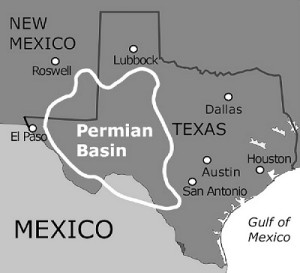
The Permian Basin would become the leading source of U.S. oil. Image courtesy Rigzone.

July 20, 2006 – Hughes Glomar Explorer recognized as Engineering Landmark
Former top-secret CIA ship Hughes Glomar Explorer, which became a pioneering petroleum industry drillship, was designated a mechanical engineering landmark during a Houston awards ceremony that included members of the original engineering team and the ship’s crew.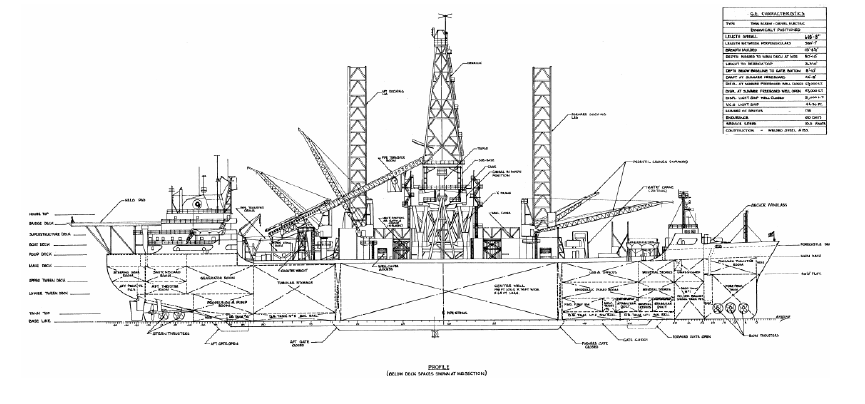
The American Society of Mechanical Engineers (ASME) in 2006 proclaimed Hughes Glomar Explorer, “a technologically remarkable ship.” Illustration courtesy ASME.
July 21, 1935 – “Diamond Glenn” McCarthy strikes Oil
Glenn H. McCarthy struck oil 50 miles east of Houston in 1935, extending the already prolific Anahuac field. The well was the first of many for the Texas independent producer who would discover 11 Texas oilfields by 1945. McCarthy became known as another “King of the Wildcatters” and “Diamond Glenn” by 1950, when his estimated worth reached $200 million ($2 billion today).
Glenn McCarthy appeared on TIME magazine in 1950.
_______________________
Recommended Reading: Stages to Saturn: A Technological History of the Apollo/Saturn Launch Vehicles_______________________
The American Oil & Gas Historical Society (AOGHS) preserves U.S. petroleum history. Please become an AOGHS annual supporter and help maintain this energy education website and expand historical research. For more information, contact bawells@aoghs.org. © 2024 Bruce A. Wells. All rights reserved.
